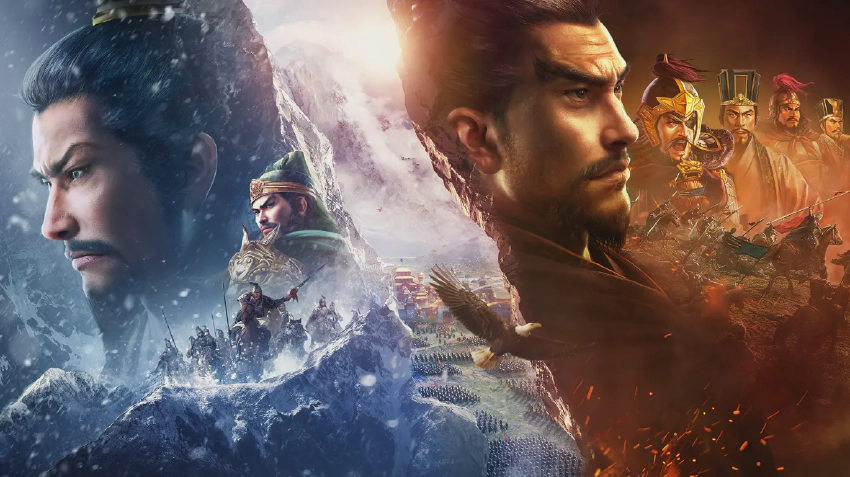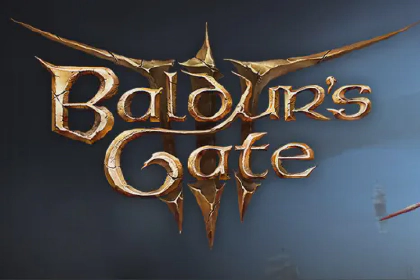
Three Kingdoms - Strategic Edition Analysis
Author:Ziming Wang, the Satrap of Luoyang
Contents
1. Highlights Design
1.1 Combat Strategy
1.1.1 Properties
The military generals in the game have six attributes: force, intelligence, command, speed, politics, and charisma.
The game divides military generals into two categories: combat and internal affairs. Combat warriors are those who are in charge of battles and need to allocate their attributes to force intelligence, command, and speed; domestic warriors are responsible for the city’s domestic resources and need to allocate their attributes to politics and charisma.
Force can be interpreted as the physical attack power of a warrior. The higher the force of a warrior, the higher the damage of general attacks and skills with force attribute bonuses.
Intelligence can be interpreted as a warrior’s spell strength and spell resistance. The higher the intelligence of a general, the higher the damage of skills with an intelligence bonus, and the less the damage of skills with an intelligence bonus from the enemy.
The command can be interpreted as a warrior’s force armor. The higher command, the less damage he or she will receive from general attacks and skills that add to the enemy’s force attributes.
**Why is there no “Spell Armor” attribute?**Instead, this and Spell Strength are combined into one attribute “Intelligence”? The reason is that by default, each warrior will make a general attack on his turn, and the general attack is a force bonus. However, the skill points of a general are limited and valuable, and an intelligent general needs to release powerful skills to kill the enemy as much as possible while ensuring his survival, so he needs to allocate some attribute points to command or speed to prevent being killed by the enemy’s forceful general. Therefore, to ensure the role and status of intellectual warriors and to ensure the diversity of the lineup, there is no “spell armor” attribute.
Speed refers to the order in which the generals act during the turn, the higher the speed the earlier the generals will act during the turn.
Politics and charisma are closely related to the game’s internal affairs. The higher the politics and charisma, the higher the output of resources and the higher the probability of creating the best equipment.
1.1.2 Skills and Combat Mechanics
The battle mechanism in Three Kingdoms - Strategic Edition is a traditional turn-based system, where the order of action is determined by the speed of all surviving generals on both sides each turn. The action process of each general is divided into a preparation phase, an action phase, and an end phase (similar to the definition of phases in tabletop games). The advantage of this design is that the behavior of each general in this battle can be analyzed, and the strength of the lineup can be evaluated according to the battle report to see if it meets expectations.
Each general can carry up to three skills, of which active release skills and preparation skills are triggered by probability, so the battle is also full of uncertainty. Players use the actual battle reports in the first and middle of the season as data samples to analyze and plan the skill distribution and skill assembly order of each general to maximize the best lineup to deal with the bloody battles in the late season.
1.2 Milestones
The milestones are designed to guide the players towards the final victory goal. The objectives are designed from simple to difficult: initially, only simple barbarians need to be cleared, then advanced cities need to be captured, then local officials need to be captured, customs need to be entered, and finally, Luoyang needs to be captured.
The milestones for each season are pretty much the same, and players who play through the first season will be more comfortable in subsequent seasons, knowing the pace of each milestone and how well they should prepare.
1.3 Social and Alliance System
Socialization in SLG games is very important to the game experience: the goals of the game, from the smallest set of advanced lands to the largest conquest of a city, require socialization with other players. The reason for this is that the game’s victory goals, campaign goals, and mission goals are designed with the policy that they are built around the need to interact with people. At the beginning of the season, a ranking of the speed of capturing high-level lands will be opened to drive players to cooperate with others with rewards to capture high-level lands to get a better ranking. Prestige ranking requires allies to occupy more cities during the event, and cities with mobilization function (no morale consumption during team movement to ensure team combat power) require alliance members to participate in raiding together, the stronger the alliance cohesion and execution, the better ranking in the ranking and better rewards.
The alliance system gives players rights: players can set up positions in alliances, and different positions have different functional rights: they are allowed to command the assembly teams of alliance members, send mail to alliance members, and group players, and establish friendly relationships with other alliances. Using rewards to drive players to take up alliance positions allows these core players to establish responsibility for the alliance, allowing players to spontaneously organize and direct other players toward their goals.
1.4 Recruitment system and Commercialization
1.4.1 Recruitment System
Compared to the regular card drawing system, the recruitment system of Sanguozhi-Strategy has more mechanisms that “aim to maximize the player’s desire to draw”.
Thirty draws must get orange warriors, every time you draw five low-status warriors the next orange warrior must be a high-status warrior (usually the core warrior of the lineup). (sense of purpose to establish)
When the server reaches the milestone, the mini card pool will be opened for all players in the service, with the same draw mechanism as the regular card pool, but with fewer prize pool martial artists. (More focused)
After the season settlement, according to the player’s performance in the current season at the beginning of the new season to reward players corresponding to the hegemony/cut card pool, the card pool for the new season of all new military generals. (The best way to get new generals quickly)
1.4.2 Commercialization
The target players of Three Kingdoms - Strategy Edition are middle-aged men around 30 years old, and most of the players have the good financial strength and sufficient time. However, such players generally have less gaming experience, and the design of complex game systems and mechanics will be difficult to understand. Therefore, the commercial design policy of this game is very simple and clear: spend money to provide players with ways and facilities to become stronger.
The most important commercialization is the above-mentioned recruitment system, combined with the star-raising mechanism of warriors, players have a very high desire to obtain and repeatedly obtain core warriors and can become stronger by spending money to draw cards.
Building the second ascension: For buildings that take a lot of time to upgrade, players can buy the second ascension at a lower price to make the building upgrade immediately. This mechanism has a heavier strategic significance in the early opening period and the middle and late season, which can quickly improve the strength of the team while saving time in the opening period (second ascension of the barracks and the monarch hall), and second ascension of the nine palaces and eight trigrams in the middle and late season can improve the combat strength of the defenders and protect The city is not captured.
Retreat in seconds: many strategic objectives are located too far from the player’s main city, many times need the player to march a night in advance, and it takes a longer time to return to the city after completing the raid, if the player needs to upgrade this team, you can choose to return to the main city in seconds to save a lot of time to train the team.
Purchase the book of strategy: players can consume the book of strategy to build tents, build arrow towers, horse defenses, mining resources, and other practical functions. At the beginning of the season, the demand for resources is very high, so players can buy the strategy book to speed up the acquisition of resources and improve the training rate of the team; also in the middle and late season battles, they can quickly deploy the horse and arrow towers to slow down the enemy’s advance rate.
Purchase the book of strategy: players can consume the book of strategy to build tents, build arrow towers, horse defenses, mining resources, and other practical functions. At the beginning of the season, the demand for resources is very high, so players can buy the strategy book to speed up the acquisition of resources and improve the training rate of the team; also in the middle and late season battles, they can quickly deploy the horse and arrow towers to slow down the enemy’s advance rate.
2. Improvement Scenarios
2.1 Soldier Suitability
Many of the skills of the generals will produce unexpected effects, but many characters will be too low suitability of the military will lead to poor combat results or even unable to fight (suitability of the military determines the real attributes of the general in battle, the better the suitability of the military, the higher the real attributes in battle, and the opposite is the lower attributes). Therefore, I think we can add a new building “Military Office” in the home construction that is unlocked at level 9 of the King’s Palace. Players can consume coins and time to improve the suitability of a certain type of soldier and can dispatch an interior warlord to assist, the higher the political attributes of the interior warlord, the higher the probability of success in improving the suitability of the soldier.
2.2 Land Scouting
Land reconnaissance is too time-consuming and should be short and time-consuming. The only information that the player focuses on is the result of the detection itself, not the selection and process of the detection.





